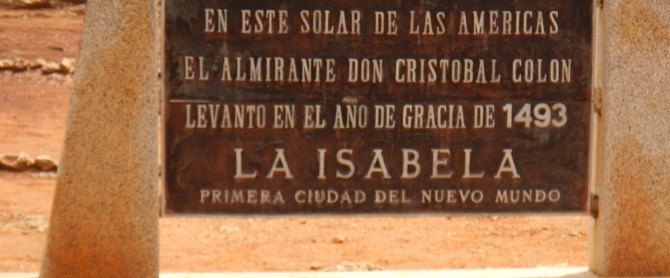Ruins of la Isabela,
Table of Contents
Ruins of La Isabela
Ruins of the Isabela belongs to those who today are known as Villa Isabela. This was the first city. Its foundation dates from 10 in December of 1493 by Don Cristóbal Colón on his second voyage. in the new world. built by Spanish in the 1494 to the North of the island facing the Atlantic Ocean. This was the main point of flow control of traffic of all kinds of things between the island and the Colonial Spain. Starting from 1496 the members of this city were migrating to other points of the island. For home of the year 1500 already this was completely abandoned and today is a place historical.
The discovery of America, as is known the arrival of the Spanish to our territory, He brought with him countless works that today are admired by the population. It was called La Isabela, in honor to the Queen Isabel de España, Since it was who gave facilities for his explorations.
History of Villa Isabela
On the first colon trip to the Indies in 1492 the Spanish made their first settlement. The strong Christmas in front of the Atlantic Sea which was under the care of 30 men. Diego Columbus was in charge of the command of this Fort, which was destroyed. After the arrival in the second voyage of Columbus have noticed the destruction of this that took him to settle down more to the East. These are established at the mouth of the river bajabonico.
The construction started at the end of the 1493 and was completed in the 1494 with the name of Isabela. The first mayor was Antonio Torres named by Columbus and found by the Kings.
Mainly the Isabela consisted of several buildings of stone. The Church between these, House for the bastimento, Hospital and the casa de Colón. Something important was whipping of the hurricanes that passed through this city in 1494 and 1495.
Famine and diseases attacked the population what led to problems in the period. Apart from these problems of the Colon family policy is sumo. Columbus back to Spain produces a new settlement and there is the revolt of Francisco Roldan.
Data important
The relentless action of time razed the buildings that were built there. Only memories are. The historical city is divided into three areas: two civilians and a military known as El Castillo. It is here where the excavations have revealed the guidelines of the remote constructions of the city according to the experts.
Facing the sea lie the remains of the ancient walls of the Emporium. Are the ruins of the house that Columbus built. The foundations of the first Church in America and the foundations of warehouses can also be observed.
Currently
Today day the ruins of the Isabela have been converted in a striking Museum that contains abundant samples of pieces of ceramics, stone and iron rescued during the excavations archaeological that is carried out in the site historic. There are also remnants of the Spanish cemetery and an outdoor grave where rests a deceased settler in those early years of contact between Spanish and Taino.
This museum is composed by 4 areas main. These are the Castle, Them Coles, Area coffee and the port.
Estimated as an of the areas protected more visited in the Dominican Republic, La Isabela has significant historical importance as the first European location in the New World.
Three generations of our history are reflected in the ruins of La Isabela: Taino, Spanish, and today day, Dominicans.
To get to La Isabela you have to travel to the village of El Castillo, located a short distance to the West of Luperón, in the province of Puerto Plata.
How to get there:
When it comes to undertake this destination we recommend carrying:
Water
Bags to collect waste and bring them back.
Long sports trousers.
Closed-toe shoes or sandals.
Calipso water resistant.(There are beaches nearby that you can visit)
Repellent (There are mosquitoes).
Sunglasses.
Sunscreen.
Swimsuit.
Towel.
Tour suitable for all the family.
- If you feel lost on the way to the ruins of La Isabela, We recommend that you navigate with the locals, They kindly indicate the road.







